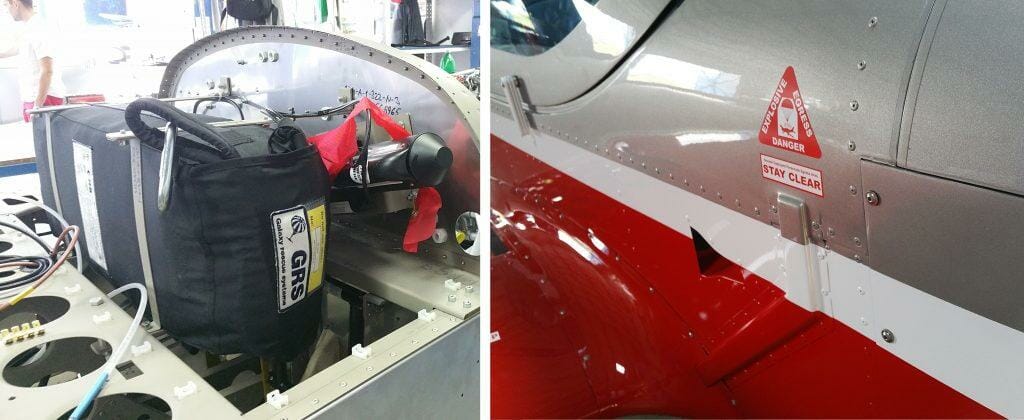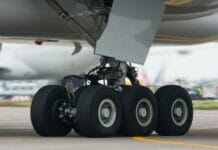Travelling is different when you are an aviation enthusiast. While some are looking for the best places to eat, researching nightlife, trying to list all the must-see places, I am browsing the internet for something else. I like travelling through new airports, I enjoy visiting local aviation museums and I always hope I will get to sit in an aircraft I have never flown in before. However, my latest trip to Slovakia beat all of that, because I got the opportunity to visit an actual plane factory – a place where Skyper GT9 and Viper SD-4 ultralights and EASA certified Viper SD-4 RTC are born.
Visiting industrial sites is not for everyone and I fully understand people who don’t see any value in it. However, I, for once, had never been to any plane factory before, so I was very excited about this opportunity. I wanted to see how a mass-produced ultralight plane is made, what processes does it go through, how are they controlled, what drives the design decisions. So I was really glad I got to visit Tomark Aero – Prešov, a Slovakia based airplane factory.
Tomark Aero is actually part of a bigger company, called TOMARK. Its main business is metal working: manufacturing trailer subassemblies, pressure vessels and a number of other metal components for the heavy industry and agriculture. The CEO of TOMARK has been an aviation enthusiast for years, so one day he decided to form a team that would create the perfect plane for him. Long story short, the design was so good that soon the decision was made –Tomark Aero had to make airplanes for sale.

Viper SD4, the company’s first plane, took off for its maiden flight in 2006. It is a low-wing two-seater – a quite athletic design from where I’m looking. The second plane, the high-wing Skyper GT9 took off for the first time in 2014. It is a faster, more touristic type of a plane, but more about the differences between the two models later.

Tour of the Tomark Aero factory
I had never been to a plane factory before so I didn’t really know what to expect. Somehow in my head I pictured almost a laboratory setting with people rushing to complete their tasks in time and partially assembled airplanes moving along on a conveyer. Obviously, that couldn’t be further from the truth as we found out getting a personal tour guided by Tomak Aero airworthiness specialist Robert Benetin.

I wanted to see the entire process of the airplane build so the tour started in the point where both TOMARK businesses meet. Sheet metal (mostly aluminium and stainless steel) is cut into shapes using an industrial laser cutter – the exact same machine is used to cut out parts for the trailer subassemblies. The laser cuts out all the holes, so that workers in the assembly line would not have to drill or cut anything. That is pretty much the only area where these two industries meet in the entire site. Interestingly, Tomark Aero always stocks up on parts, so that the manufacturing process would not be hindered by shortages.

Then these flat parts are deburred and bent into shapes using other machines. Later they form all the needed components for the structure of the plane, including beams for the monocoque construction of the front part of the fuselage of the Viper SD4. The Skyper GT9 is a little bit different, since its front fuselage is actually constructed from thin steel tubes – a common architecture for this kind of plane.

Of course, before any of these parts get put together to form the basic structure of the plane, they are coated against corrosion and marked so that the assembly line workers would know which part goes where and what process it has to go through. Both Tomark Aero models are basically fully metal, so there are a lot of different parts. I was surprised to see how controlled the process is and to find out that quality check-ups are done at each and every stage.

When the basic structure is assembled, the engine is installed on a special frame at the nose of the plane and workers start putting the wiring in. That is a very meticulous task, because not only engine controls have to be installed, but also cables for avionics, whole-plane parachute for emergency landing, fuel tanks switch and many other devices. After that, the outside layer of aluminium is riveted on and the basic shape of the plane is complete.

At the same time, the wings are being made – also fully metal. Skyper GT9 has slightly thinner wings, but both airplanes have fuel tanks with pretty much the same capacity. Interestingly, Viper SD4 has nice wingtip devices, with a gentle curve going up and back. They are made from composite materials and serve to reduce aerodynamic drag, but, at least for my eyes, they make the entire plane look much more elegant.
Some clips from our visit
When the plane is partially assembled it is time to put it into the paintshop. Tomark Aero has the biggest closed paint booth in Central Europe. Clients can choose from a selection of paint schemes, but, if they think nothing in the catalogue represents their taste, they can opt for a custom paintjob.

Then the airplane is taken to a nearby airfield for final assembly and flight testing. At first, the plane is finished – all devices are installed, seats, cabin upholstery are put in and temporary number for testing is pasted onto the fuselage. Initial testing is done on the ground – quality control experts look over the entire airplane checking for defects. Then all controls and avionics devices are inspected and after that the plane is prepared for its maiden flight.

This job belongs to a test pilot. He follows instructions about what manoeuvres he has to do in the first flight and registers all the defects if there are any. Then they are immediately corrected so that the customer would get his/her plane in perfect condition.

Finally, when the customer decides to ship his/her airplane to aforeign country, the wings are taken off, the plane is packed into a crate and shipped to its owner. It is also possible to fly-over finished airplanes directly to the customers and there is also the option to pick-up the airplane at Tomark Aero test airfield. It typically takes around four months from order until delivery, but, in some cases, Tomark Aero can deliver an airplane quicker – stocking on parts allows for some flexibility in manufacturing time. Delivery time also depends on the customer paint-job scheme, whether it is one already available or if it is customized.

Both Skyper GT9 and Viper SD4 look mighty impressive for an outsider like me, but how do you chose which one to buy?

Skyper GT9 and Viper SD4
Skyper GT9 is a high-wing airplane, designed mostly for touristic-type of flying. Because its wings are mounted on the top of the fuselage, the ingress is simple, the luggage compartment is easily accessible from the outside and the plane sports an impressive performance. Meanwhile, the Viper SD4, although a bit slower, is a more robust airplane, which will appeal to more passionate pilots. It is more athletic looking and it is EASA certified to be used in pilot schools – that is a big part of its appeal.
Differences of variants of individual Tomark Aero Airplanes
| „Viper SD-4 RTC“ | „Viper SD-4 LSA“ | „Viper SD4 UL“ | „Skyper GT9 UL“ | |
| Wing span | 8,4 m | 8,4 m | 8,4 m | 9 m |
| Length | 6,4 m | 6,4 m | 6,4 m | 6,3 m |
| Height | 2,2 m | 2,2 m | 2,2 m | 2,1 m |
| Engine | Rotax 912 S / ULS (100 HP) | Rotax 912 UL/A/F (80 HP)
Rotax 912 S / ULS (100 HP) Rotax 914 UL / F (115 HP) |
Rotax 912 UL/A/F
(80 HP) Rotax 912 S / ULS (100 HP) |
Rotax 912 UL
(80 HP) Rotax 912 ULS (100 HP) |
| Maximum take-off weight | 600 kg | 600 kg | 472,5 kg | |
| Cruise speed | 195 km/h | 195 km/h | 195 km/h | 220 km/h |
| Maximum speed | 240 km/h | 240 km/h | 240 km/h | 250 km/h |
| Ceiling | 4 725 m | 5000 m | ||
| Runway (take off/landing) | 240/ 176 | 240/ 176 | 150/140 m | 120/80 m |
| Fuel tank capacity | 100 l | 70 / 100 l | 70 / 100 l | 88 l |
In LSA specifications both planes are heavier (maximum weight reaches 600 kg), which means that a bit-longer runway is required. Also, instead of the 70l fuel tank LSA specified the Skyper GT9 and Viper SD4 get 100-litre fuel tanks.
In short, Skyper GT9 is easier to use and maintain and to live with. It is also faster than Viper SD4, although a little less rigid. Meanwhile, Viper SD4 is a sportier airplane. It is strong, reliable and looks good. It is also very easy to fly – a perfect choice for pilot schools. Viper SD4 can be also used as a great towing machine for gliders or banners. Ideal for flight clubs.

By the way, I asked about the safety record of these planes. This really not-polite question was met with a smile – while there have been several crashes, none of them were caused by mechanical faults nor factory defects.
Summing up
It is the first airplane factory I’ve ever been to. While I was expecting a busy and almost laboratory-like setting, it was much simpler – just an industrial site where everyone fulfils their functions. There are no robots as far as I could see and every plane was caressed by human hands on every step of the way. Kind of a romantic image, to be honest, but it is very technical.

Everything regarding the airplane manufacturing is done to the highest possible standards. The quality control is meticulous and watches over every airplane at every stage. However, make no mistake – Tomark Aero airplanes do have some passion about them. They appeared in this world because the CEO of the company simply loves aviation and this sense is visible throughout the factory. I saw posters with fighter jets in one of the stations where the cabin and interior get installed – these people just love what they are doing. And I loved visiting the factory, learning a lot about manufacturing of ultralight airplanes and seeing these birds before the wind touches their wings.




